 August 28, 2014 John E. Ross, KD8IDJ, Editor
| |||||||||||
ARRL Headquarters Closed on Labor Day: ARRL Headquarters will be closed on Labor Day, Monday, September 1, and there will be no W1AW bulletins or code practice. ARRL Headquarters will reopen at 8 AM Eastern Time on Tuesday, September 2. We wish everyone a safe and enjoyable holiday! Major ARRL Second Century Campaign Gift from JA1BK Will Support DX Log Archive A major donation from noted DXer Kan Mizoguchi, JA1BK, to the ARRL Second Century Campaign will support "The DX Log Archive The ARRL will be reaching out to the DX community to collect paper DX station logs for inclusion. All logbooks will be inventoried and housed at ARRL Headquarters.
Confirmations from archived logs will be made available via Logbook of the World (LoTW) or, upon request, with a traditional QSL card. The ARRL Membership and Volunteer Programs Department will manage the DX Log Archive Program. A qualified volunteer or part-time ARRL employee will execute the project. Earnings also will fund any equipment, software, and materials needed to maintain the program. On behalf of the League, ARRL Individual Giving Manager Lauren Clarke, KB1YDD, expressed thanks and appreciation to Kan for his financial contribution that will make this new program possible. FCC Proposes to Fine CBer $14,000 for Not Permitting Station Inspection The FCC continued this month to demonstrate that it's serious about enforcing its rules and regulations, proposing to fine a Florida Citizens Band operator $14,000 for failing to allow FCC agents inspect his station. The Commission issued a Notice of Apparent Liability for Forfeiture (NAL) to Tommie Salter of Jacksonville on August 22. The Commission alleged that Salter earlier this year denied permission for agents from the FCC's Tampa Office to check out his station in the wake of renewed complaints of interference to a neighbor's "home electronic equipment." On March 21, the agents monitored radio transmissions on 27.245 MHz and used radio direction-finding techniques to track the signal's source to Salter's residence.
The FCC's Forfeiture Policy Statement and its rules set a base forfeiture amount of $7000 for failure to permit inspection. Salter had previously received a Notice of Violation for refusing an inspection request in 2004, the NAL noted, and he also had been fined for operating with a non-certificated transmitter during restricted hours the Commission had imposed following similar interference complaints. "Misconduct of this type is serious, exhibits contempt for the Commission's authority, and threatens to compromise the Commission's ability to fully investigate violations of its rules," the FCC said in making an "upward adjustment" of $7000 in the proposed forfeiture. In a footnote, the FCC pointed out that its agents do not have to obtain a search warrant prior to requesting a station inspection. Salter has 30 days to pay the fine or to seek reduction or cancellation of the proposed forfeiture. In July the FCC proposed substantial fines for two radio amateurs, alleging deliberate interference with other Amateur Radio communications and failure to properly identify. US-to-VK Transpacific Reception on 630 Meters Reported A radio amateur and medium-frequency (MF) experimenter in Australia has received a 630 meter (475.62 kHz) transmission from a radio amateur and Part 5 Experimental operator in Texas. While the
approximately 8710 miles covered is not a distance record nor a "first" for that part of the spectrum, it does represent the sorts of accomplishments that the Amateur Radio community in the US might come to enjoy if a band at 472-479 kHz ever becomes a reality. John Langridge, KB5NJD, in Texas, who holds Experimental license WG2XIQ, told ARRL that having his WSPR signal heard in Australia on August 25 at 0952 UTC by David Isele, VK2DDI, was a "huge surprise." "I did not know until I got a text message that morning," Langridge said. "I am normally checking the band during the overnight hours but went to bed very early on Sunday night and slept until almost 7:45 AM local. I had not seen my e-mails, but the local community as well as the one in Oceania was abuzz. Needless to say I woke up very fast and started looking at data." Langridge said he only recently renewed his FCC Part 5 license, requesting a power increase to 10 W in the process. He said the only longer WSPR reception report on 630 meters was in February 2013 and involved a 10,450 mile path from Australia to France. Signals from North America have been heard in Australia on 630 meters using other modes. "Many of us use WSPR as an effective means of determining band conditions very quickly, which can lead to two-way [communication]," Langridge said. "WSPR has a very well-established listener base, which provides tremendous amounts of data with a 2-minute transmit cycle." He said WSPR is a good tool to introduce newcomers to 630 meters and MF operation, and that many MF operators, including him, stumbled into the nether ranges of the spectrum by way of monitoring WSPR and, as he put it, "seeing how amazing this band really can be."
WG2XIQ is equipped with an 80 foot tall asymmetrical T-top vertical, base loaded with a motorized variometer and almost 3 miles of radials. He generates a signal on 630 meters using an MF Solutions transmit downconverter, driving two GW3UEP Class D/E amps in parallel, combining them using a 0° hybrid combiner and filter with a low-pass filter. "I can make 200 W total power output, which at this time of year equates to about 4 or 5 W ERP," Langridge said. "During the fall and winter, once the trees have lost their leaves and system resistance goes down, that 200 W TPO will look more like 10 W ERP, so things only stand to get better as we move into the 2014 MF season." On the Australian end, VK2DDI, who lives in New South Wales, said he was just taking "a quick look on 630 meters" when "up popped WG2XIQ" in a faint trace on his display. He was expecting it to be another Australian operator. "Pleasant surprise for all concerned," he said in a post to a 630 meter news group. Isele uses a 30 meter thin, galvanized-iron vertical wire, strung between a ground rod and a high tree branch for receiving on 630 meters. It has no radials and no antenna tuner. "I hear better than most on most bands," he told Langridge, adding that he lives in a rural area 512 meters above sea level with few noise issues. "There are so many misconceptions about what goes on below the AM broadcast band," Langridge told ARRL. "It's amazing how many people still know nothing about the 630 meter band." Langridge calls himself "one of those crazy individuals" who believes that one day radio amateurs will earn DXCC on 630 meters. "As modulation methods and receivers continue to improve, I do think it will be a reality," he said. "But it will be a lifelong pursuit. That alone will make it even more worthwhile." The ARRL is sponsoring the WD2XSH experimental group in the vicinity of 500 kHz. Balloons Carrying Amateur Radio Payloads Still Circling the Earth Three plastic foil-envelope balloons carrying Amateur Radio payloads and launched from the UK by Leo Bodnar, M0XER, remain aloft and continue to circle the Earth. The oldest, identified as B-63, was released on July 8 and became the second of Bodnar's balloons to circumnavigate the globe. The first to do so, B-64, went up on July 12 and had completed one lap around the Northern Hemisphere by July 31. Air currents have carried the balloon within 9 km of the North Pole and within 10 km of its launch site. The last balloon to make it around the Earth was B-66, which Bodnar released on July 15.
Each balloon carries a tiny 10 mW solar-powered transmitter that can alternate between APRS and Contestia 64/1000 digital mode on 434.500 MHz (USB). The Amateur Radio payload weighs just 11 grams. As of this week, the B-64 balloon (M0XER-4 on APRS) was north of Moscow, Russia, at an elevation of more than 40,200 feet; the B-63 balloon (M0XER-3 on APRS) appeared to be located nearly 42,000 feet above South Korea, and the B-66 balloon (M0XER-6 on APRS) appeared to be nearly 44,000 feet above Ukraine. Notes on the M0XER-3 and M0XER-6 APRS pages flag their reported trajectories with "Seriously bad path," however, and add, "This station appears to be flying at high altitude and using digipeaters, which causes serious congestion in the APRS network. The tracker should be configured to only use digipeaters when at low altitude." The numeral following the "B" denotes the number of similar balloons Bodnar has launched (B-65 failed to deploy). The transmitter stores positions during its flight and transmits a log file that can recall 5 days of previous locations in the comments field of its APRS transmissions. If it has been out of radio contact, however, a straight line will appear on the APRS map. W1AW Centennial Operations Relocate to Tennessee, Oregon on September 3 The ARRL Centennial W1AW portable operations taking place throughout 2014 from each of the 50 states are now in Arizona and Maine (Maine is the last state to activate). Operations will relocate at 0000 UTC on Wednesday, September 3 (the evening of September 2 in US time zones), to Tennessee (W1AW/4), and Oregon (W1AW/7). During 2014 W1AW will be on the air from every state (at least twice) and most US territories.
Working W1AW/x from each state is worth 5 points per mode/contact, even when working the same state during its second week of activity. To earn the "Worked all States with W1AW Award," work W1AW operating portable from all 50 states. (Working W1AW or W100AW in Connecticut does not count for Connecticut, however. For award credit, participants must work W1AW/1 in Connecticut.) A W1AW WAS certificate and plaque will be available. An ARRL Centennial QSO Party leader board shows participants how many points they have accumulated in the Centennial QSO Party and in the W1AW WAS operations. Log in using your Logbook of The World (LoTW) user name and password, and your position will appear at the top of the leader boards. Results are updated daily, based on contacts entered into LoTW. 2014 ARRL Field Day Logs Received List Available for Review
W1AW/8 to Take the Snowball's Chance This Fall It will be hell for W1AW/8 in Hell, Michigan, on October 18 -- the Saturday of Michigan's second week in the ARRL Centennial QSO Party spotlight. Hank Greeb, N8XX, is organizing a team of operators to operate W1AW/8 in Feld Hell mode on 80 through 10 meters from Hell. He has recruited a couple of volunteers so far but could use more, he said this week.
"The plan is to have each band covered for at least one hour," said Greeb, who operates QRP most of the time. "We'd like to have at least three stations active, to cover three bands at once, hugging the maximum usable frequency (MUF) at first, and then moving to lower frequency bands as the MUF drops." Greeb said a website will announce the operating schedule, once plans have solidified. Watch for W1AW/8 to be spotted on Fell Hell mode. Also known as Hiland Lake, Hell, Michigan, is an unincorporated community a few miles northwest of Ann Arbor. How Hell got its name is the subject of unconfirmed historical accounts and even some wild speculation. According to one version, after Michigan became a state, George Reeves, who built the community's first sawmill and operated its first tavern, was asked what to call the town. He is rumored to have replied, "You can name it hell, for all I care." The moniker became official in 1841. Other "Hells" exist in California, Norway, and the Grand Caymans. Michigan also has a town named Paradise.
Feld Hell -- or Hellschreiber -- is a facsimile mode invented by Rudolf Hell in the 1920s that used synchronous motors to transcribe letters onto a moving tape. Feld Hell has since morphed into a computer-generated mode, typically using AFSK into a SSB transceiver and decoding software that essentially "paints" the characters on the screen. Popular software includes DM780 (part of the Ham Radio Deluxe suite), Fldigi, MixW, MultiPSK, and IZ8BLY. Additional information is available on the Feld Hell Club website. And, just in case you were wondering, Hell, Michigan, has indeed frozen over a time or two. Contact Hank Greeb, N8XX, if you're interested in taking part in the W1AW/8 Feld Hell operation. Read more. World DATV QSO Party is August 29-30 Greater participation is expected this year in the only global on-the-air gathering of digital Amateur Radio television (DATV) enthusiasts. The annual event, which originated in Australia and now is in its fourth year, begins Friday, August 29, at 1000 UTC in Australia and internationally on Saturday, August 30, at 0001 UTC. According to the event's primary organizer, Peter Cossins, VK3BFG, to maximize the number of signals, stations should work through ATV repeaters where possible. Others may use Skype to reach a local anchor, if there is no other alternative, and then that signal will be sent on to a repeater.
International repeaters are WR8ATV in Columbus, Ohio, with Art Towslee, WA8RMC, a designer on the DATV-Express project; the W6ATN Amateur Television Network in Southern California, consisting of nine linked repeaters with Don Hill, KE6BXT, as the local anchor, and GB3HV, the Home Counties ATV Group. London. All amateur television users are welcome to participate, either by arranging a suitable time with their nearest anchor, or by watching the proceedings through the repeaters or streaming via the British Amateur TV Club website. Many segments are of the show-and-tell variety, with ATVers in their shacks before the camera. The Amateur Television Directory is a web-based resource. More information on the World DATV QSO Party is available from Peter Cossins, VK3BFG. -- Thanks to Jim Linton, VK3PC Summits-on-the-Air Activity Weekend is September 13-14 North America Summits on the Air (SOTA) Activity Weekend 2014 is a casual event in which summiting radio amateurs (called "activators") use tiny battery-powered radios to work home-based operators (called "chasers"). SOTA operators have climbed mountains as high as 14,000 feet. They run low power, and they don't operate split, so operator courtesy is paramount. The SOTAwatch2 website offers information regarding what stations are on which mountains. Summits are numbered, and mousing over the number will reveal the name and point value for each summit. Activity typically concentrates near 7.032, 7.185, 10.110, 14.061, 14.342, 18.095, 18.155, 21.061, 21.350, 24.905, 24.955, 28.061, 28.420, 146.52, and 446.00 MHz. Participants collect points toward SOTA certificates and trophies. -- Thanks to Elliott Pisor, K6EL Support ARRL and Be Rewarded! Sign up today for the ARRL Visa Signature® Card and be rewarded. When you apply and make a first purchase on the card, you'll receive Disclaimer: Subject to credit approval. Accounts must be open and in good standing (not past due) to earn statement credit. Please wait 6-8 weeks after meeting threshold for account to be credited. The creditor and issuer of the American Radio Relay League Card is U.S. Bank National Association, pursuant to a license from Visa U.S.A. Inc. © 2014 U.S. Bank National Association. Gerald Youngblood, K5SDR, Will Be 2014 ARRL/TAPR Digital Communications Conference Banquet Speaker Gerald Youngblood, K5SDR, will be the banquet speaker at the 2014 ARRL/TAPR Digital Communications Conference (DCC), September 5-7 at the Austin Marriott South in Austin, Texas. His presentation will be, "Accidental Company, the Making of FlexRadio."
Free tables will be available to demonstrate projects and for vendors to display products. More information on the conference is available on the TAPR DCC web page. ARRL First Vice President Rick Roderick, K5UR, to Keynote W9DXCC 2014 ARRL First Vice President Rick Roderick, K5UR, will be the banquet speaker for the 62nd annual W9DXCC, September 19-20, 2014, in
Schaumburg, Illinois. Registration remains open. The special hotel rate is valid through August 28; banquet orders must be received by September 13. DXers, anyone interested in learning more about DXing, and their guests are welcome. There is a full program of forums and discussions, and some of the illuminati of the DXing community will be on hand. E-mail for more information. W9DXCC is an ARRL-approved Operating Specialty Convention and is sponsored by the Northern Illinois DX Association. 73 on 73 Award Announced Paul Stoetzer, N8HM, is sponsoring a new award for contacts made via the UK Amateur Radio Educational Satellite FUNcube-1 (AO-73) to promote activity on the satellite. The award period begins on E-mail log extracts containing the call sign of each station worked and the date/time (UTC) of each contact. Include your mailing address. The AO-73 inverting transponder uplink is 435.150-435.130 MHz (LSB). The downlink is 145.950-145.970 MHz (USB). Use no more than 5 W to a 7 dBi gain antenna when accessing the AO-73 transponder. -- Thanks to AMSAT News Service via Paul Stoetzer, N8HM Operations Approved for DXCC Credit The ARRL DXCC Desk has approved these operations for DX Century Club credit: A52JR, 4W/HB9FLX, 4W/N1YC, and 4W/PE7T. If a DXCC is Amateur Radio's premier award that hams can earn by confirming on-the-air contacts with 100 DXCC "entities," most of which are countries in the traditional sense. You can begin with the basic DXCC award and work your way up to the DXCC Honor Roll. Learn more. NASA Astronaut Steven R. Nagel, N5RAW, SK Astronaut and Space Shuttle veteran Steven Nagel, N5RAW, of Houston, Texas, died August 21. He was 67. In April 1991, Nagel was the commander of the first all-ham Space Shuttle crew aboard Atlantis
with Kenneth Cameron, KB5AWP; Jay Apt, N5QWL; Linda Godwin, N5RAX -- whom he later married -- and Jerry Ross, N5SCW, during the SAREX (Shuttle Amateur Radio EXperiment) program, the forerunner to ARISS. In all, Nagel flew on four Shuttle missions in the 1980s and 1990s. Nagel joined the Astronaut Corps in 1979 and was the pilot on the last successful mission of Challenger in the 1980s, the only time eight people were launched into space aboard the same spacecraft. Following the Challenger disaster in January 1986 that killed seven astronauts, Nagel was part of the effort to develop a crew escape mechanism. "This was my best time at NASA, actually," Nagel once said in an interview for the space agency. "Nothing I ever did was more fulfilling than that 2 years, to be honest, even flying." Nagel logged 723 hours in space. One of his last public appearances was at the 2013 ARRL Midwest Division Convention in Lebanon, Missouri, where he spoke to nearly 300 students at Lebanon schools, did a presentation about the first half- century of spaceflight, and took part in a youth forum with Carole Perry, WB2MGP. Nagel retired from the Air Force and the Astronaut Office in 1995 and went to work for Johnson Space Center in Houston. A year later, he transferred to NASA's Aircraft Operations Division as a research pilot. He retired from NASA in 2011 and joined the faculty of the University of Missouri at Columbia. Survivors include Godwin and their two daughters. -- Thanks to NASA, NPR, ARRL Midwest Division Newsletter
A Century of Amateur Radio and the ARRL In January 1976, QST expanded to an 8-1/2 × 11 format! The new size would reduce the printing cost by $100,000 a year. The old, smaller format had remained in place for years, because it was the size of the press the local printer had in those early days. Following the fall of South Vietnam, thousands of refugees from that country poured into the US. The State Department provided housing in unused military bases, but there was a need for communication to help reunite families. US State Department employee Jim Bullington, K4LSD, saw that ham radio would be ideal for the task and proposed the idea to the ARRL Board of Directors (which happened to be in session at the time). The Board supported the idea, and hams entered a new area of public service that provided humanitarian aid -- again showing the public what our operators could do. See "Operation Vietnamese Refugee" by George Hart, W1NJM, in the February 1976 QST for a full description of the effort.
By the mid-1970s, Citizens Band radio had become hugely popular, which led to a major crime wave of mobile CB radio thefts. Criminals typically are not noted for their superior intellect, so occasionally 2 meter ham gear was purloined and even used, with the thief believing he was on CB. In some cases, hams were able to identify the pirate for the police to investigate. The League began encouraging clubs to recruit CB operators into Amateur Radio. Many CB operators rose to the challenge, as they came up against the limitations of CB operation. As a result, the number of new licensees rose sharply. QST published a series of articles called "Learning to Work with Integrated Circuits," to help hams keep up with that new technology. The state of the art in power transistors continued to improve, and QST articles appeared, detailing the construction of solid-state kilowatt amplifiers for the ham. During the latter half of the 1970s, articles and editorials in QST reported on the League's work in preparation for defending our amateur allocations at World Administrative Radio Conference 1979 (WARC-79). Hidden transmitter hunts, also known as radio foxhunting, had been very popular in Europe for some time, and the sport started catching on in the US, mostly involving the use of 2 meter FM. -- Al Brogdon, W1AB The K7RA Solar Update Average daily sunspot numbers this week moved from 101.7 to 113.4, while average daily solar flux changed from 111.8 to 130.5. The active day, according to geomagnetic indicators, was Wednesday, August 27, when the planetary A index reached 20. This was the result of a coronal mass ejection (CME), which created aurora at both of Earth's poles.
Predicted planetary A index is 25, 10, and 8 for August 28-30, 12 on August 31 and September 1, 5 on September 2-5, 8 on September 6-7, and 12 on September 8. This weekly "Solar Update" in The ARRL Letter is a preview of the "Propagation Bulletin" issued each Friday. The latest bulletin and an archive of past propagation bulletins is on the ARRL website. In tomorrow's bulletin look for an updated forecast and reports from readers. Send me your reports and observations. Just Ahead in Radiosport
See the ARRL Contest Calendar for more information. Upcoming ARRL Section, State and Division Conventions and Events
Find conventions and hamfests in your area. ARRL -- Your One-Stop Resource for
Subscribe to...
Free of charge to ARRL members...
| |||||||||||
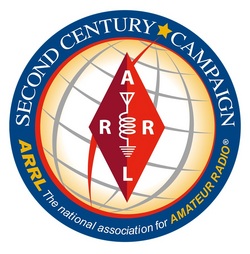 Endowed by JA1BK." Earnings from the generous gift will fund the creation and management of a DX Log Archive Program for paper DX logs of rare and significant DXpeditions that took place predominantly in the 1950s, 1960s, and 1970s. The archive also would include pre-1950 paper logs, as well as those from rare operations, and logs kept by long-time residents of very rare entities.
Endowed by JA1BK." Earnings from the generous gift will fund the creation and management of a DX Log Archive Program for paper DX logs of rare and significant DXpeditions that took place predominantly in the 1950s, 1960s, and 1970s. The archive also would include pre-1950 paper logs, as well as those from rare operations, and logs kept by long-time residents of very rare entities.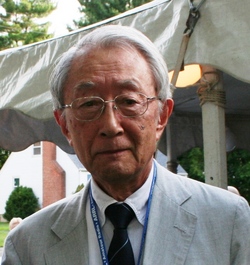
 "The agents told Mr Salter about the radio interference complaint from a neighbor and asked if they could inspect his CB radio station," the FCC NAL recounted. "Mr Salter denied the agents' request. The agents verbally warned Mr Salter that refusing to allow an inspection of his CB radio station violated the [Communications] Act and the [FCC] rules and could result in a forfeiture action, but he again denied the request."
"The agents told Mr Salter about the radio interference complaint from a neighbor and asked if they could inspect his CB radio station," the FCC NAL recounted. "Mr Salter denied the agents' request. The agents verbally warned Mr Salter that refusing to allow an inspection of his CB radio station violated the [Communications] Act and the [FCC] rules and could result in a forfeiture action, but he again denied the request."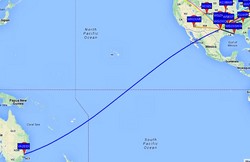
.png)
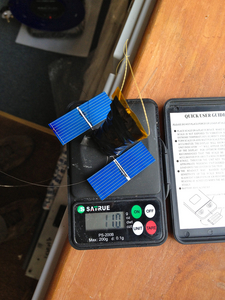
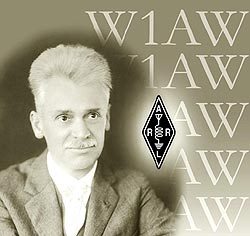 The
The 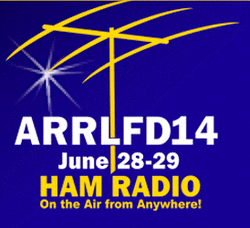 The ARRL "
The ARRL "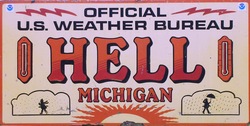
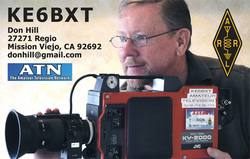
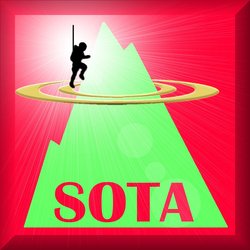 This year's event, September 13-14, is aimed at introducing SOTA to newcomers. There are no rules regarding power levels, modes, or bands.
This year's event, September 13-14, is aimed at introducing SOTA to newcomers. There are no rules regarding power levels, modes, or bands.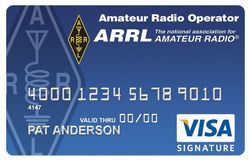
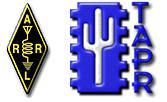 The 33rd annual DCC will offer 2 days of technical forums on Friday and Saturday and a concurrent introductory forum on Saturday (the Proceedings will be available following the conference). The Sunday morning seminar will be "Introduction to SoC FPGA Programming for Mixed Signal Systems," by Chris Testa, KD2BMH.
The 33rd annual DCC will offer 2 days of technical forums on Friday and Saturday and a concurrent introductory forum on Saturday (the Proceedings will be available following the conference). The Sunday morning seminar will be "Introduction to SoC FPGA Programming for Mixed Signal Systems," by Chris Testa, KD2BMH..jpg)
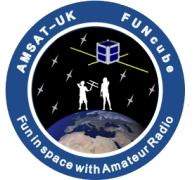 September 1. Requirements are simple: Work 73 different stations on AO-73 (SSB or CW). There are no geographic restrictions on operating location, no QSLs are required, and the award is free, although Stoetzer encourages contributions to AMSAT-UK and to AMSAT-NA's Fox program.
September 1. Requirements are simple: Work 73 different stations on AO-73 (SSB or CW). There are no geographic restrictions on operating location, no QSLs are required, and the award is free, although Stoetzer encourages contributions to AMSAT-UK and to AMSAT-NA's Fox program.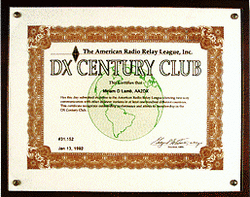 request for DXCC credit for any of these operations has been rejected in a prior application,
request for DXCC credit for any of these operations has been rejected in a prior application, 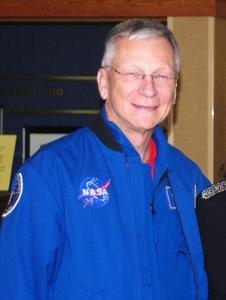
.jpg)
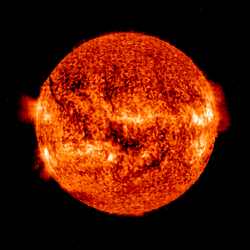 Predicted solar flux is 125 on August 28-29, 120 on August 30-31, 115 on September 1-4, 120 on September 5-6, 125 on September 7-8, and 120 on September 9. Solar flux then will peak at 145 for September 16-17.
Predicted solar flux is 125 on August 28-29, 120 on August 30-31, 115 on September 1-4, 120 on September 5-6, 125 on September 7-8, and 120 on September 9. Solar flux then will peak at 145 for September 16-17.







